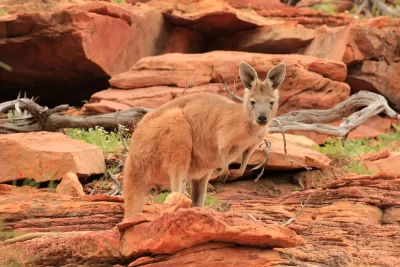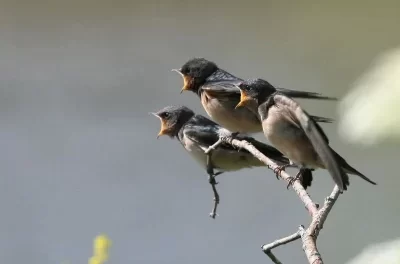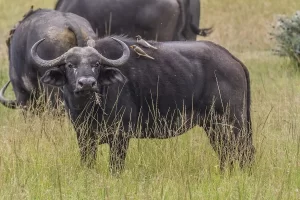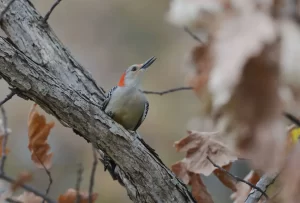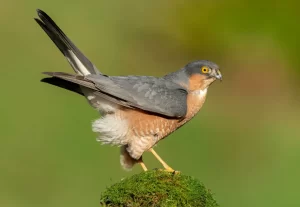An iconic symbol of Australia and its outback, this kangaroo is the biggest marsupial alive today, and one of the most striking and abundant of all kangaroos. The male is much bigger and more powerful than the female and is typically rich reddish-brown in coloration, while females are more bluish-gray.

Both male and female have a black and white mark on the side of their muzzle and a wide white stripe on their cheek. The tip of their dusky nose is partially naked. It is the largest of all kangaroos, the largest terrestrial mammal native to Australia, and the largest extant marsupial. It is found across mainland Australia, except for the more fertile areas, such as southern Western Australia, the eastern and southeastern coasts, and the rainforests along the northern coast. For more information about the Kangaroos,, read the full article with Pritish Kumar Halder.
Distribution
Red kangaroos inhabit the arid regions of Australia’s mainland, except the extreme north and extreme southwest of the country, and the east coast. They can be found in scrubland, grassland, and desert habitats. They prefer open habitats with some trees for shade
Habits and Lifestyle
Red kangaroos gather in small groups of about 10, called “mobs.” The groups are mainly made up of females and their young, with one or a few males. Females stay within the mob they were born in. Occasionally, huge numbers of these kangaroos congregate where there is excellent forage, sometimes up to 1,500 individuals. They are mostly active at twilight and during the night, resting during the day in the shade – but they sometimes move around during the day. They spend most of their active period grazing.

Red kangaroo in mob
When grazing in a group they are always looking out for danger and they warn others by stamping their feet. At this sign, young joeys will hop back into the pouch of their mother for safety. Red kangaroos are also adept swimmers and often flee into waterways if threatened by a predator. If pursued into the water, they may use their forepaws to hold the predator underwater so as to drown it.
Diet and Nutrition
Red kangaroos are herbivores (folivores) and eat only plants, preferring green herbage, such as flowering plants, forbs, and grasses. They can go for long periods without water by eating succulent plants that are filled with moisture.
Mating Habits
Red kangaroos are polygynous animals, males competing for mating opportunities with several females. They will try to have exclusive access to several females, actively driving away other males. Such competition sometimes results in “boxing” matches, when males hit at one another using their forepaws, and kick out with their feet. The breeding season is year-round if conditions are favorable. Females give birth usually to a single young, following a gestation period of about 32 to 34 days.

Red kangaroo with child
When born, the joey climbs its way up through its mother’s fur and into her pouch, where it remains, attached to a teat for 70 days. It first puts its head out of the pouch after 150 days, coming out for short periods after 190 days. A female lactates for about a year, carrying her joey in her pouch for around 235 days. Young females may first reproduce as early as 18 months of age and as late as 5 years during drought, but normally they are 2.5 years old before they begin to breed.
Population
Population threats
The Red kangaroo is faced with no major threats, and it continues to be an abundant and widely distributed species. Intensive agriculture would affect this species, but, as yet, not much of its habitat has been affected. Some argue, however, that competition with introduced rabbits and livestock, particularly during periods of drought, could be a threat. This kangaroo is in some areas so numerous that it is commercially harvested for its hide and meat, and sometimes also is shot as a pest.

Red – kangaroo
Population number
According to the Australian Government Department of the Environment, the total number of Red kangaroo is 11,514,298 individuals. This species numbers’ are stable today and it is classified as least concern (LC) on the IUCN Red List.
Ecological niche
The Red kangaroo has an important role in shaping communities of vegetation in the ecosystems where they live due to their action as grazers.
Relationship with human
The red kangaroo is an abundant species and has even benefited from the spread of agriculture and creation of man-made waterholes. However, competition with livestock and rabbits poses a threat. It is also sometimes shot by farmers as a pest, although a “destruction permit” is required from the relevant state government.
Kangaroos dazzled by headlights or startled by engine noise often leap in front of vehicles, severely damaging or destroying smaller or unprotected vehicles. The risk of harm to vehicle occupants is greatly increased if the windscreen is the point of impact. As a result, “kangaroo crossing” signs are commonplace in Australia.
Peak times for kangaroo/vehicle crashes are between 5:00 PM and 10:00 PM, in winter, and after extended dry-weather spells.

red-kangaroo-gazing
Fun Facts for Kids
- Males are “boomers”, females are “flyers” and young are “joeys”.
- Red kangaroos are so-named due to the color of their fur. The red is, in fact, a musky red oil this is excreted from glands in their skin.
- A joey is about the size of a jellybean when born.
- Red kangaroos can jump as high as six feet (1.8 m), and leap a distance of 29 feet (8.8 m).
- On land kangaroos always move their back legs together, but in water, they will kick each leg independently when swimming.
- Due to the position of their eyes, Red kangaroos’ range of vision is approximately 300° (324° with about 25° overlap).
- Kangaroos are the only big animals to hop as their main method of locomotion. This is an energy-efficient and fast means of travel, which enables them to go long distances in areas where there is little water and food available.
- A joey sometimes will jump headfirst into its mother’s pouch if frightened.
- Kangaroos outnumber people in Australia. They are the country’s national symbol and appear on coins, postage stamps, and airplanes.

